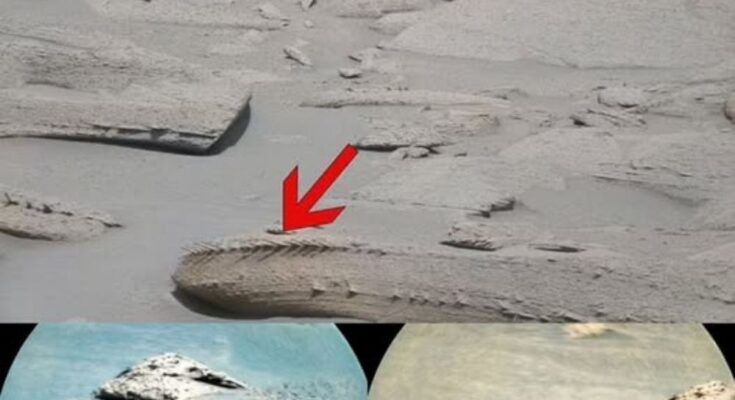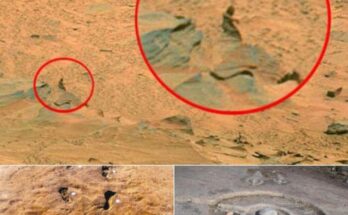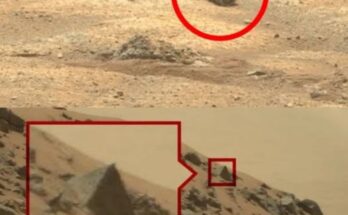It has been described as one of the ‘most bizarre’ objects ever discovered on the Martian surface.
Well, far-fetched though it may seem, scientists say they cannot rule out the possibility that an alien spacecraft crash-landing on the Red Planet was responsible.

Peculiar: Scientists say they cannot rule out the possibility that an alien spacecraft crash-landing on the Red Planet was responsible for creating these strange spikes in the rock above

Nevertheless, there has been feverish speculation about what the rock could be ever since the US space agency’s Curiosity rover pH๏τographed it at the base of the 96 mile-long (154 km) Gale Crater in April.
At the time, NASA astrobiologist Dr Nathalie Cabrol said it was ‘the most bizarre rock’ she had ever seen in 20 years of studying the Red Planet.
She hypothesised that Martian winds may be to blame, with the feature likely to be the ‘remains of ripples after lots of erosion’.
Fossilised fish bones, dinosaur remains, or bits of an old Earth-made spacecraft have also previously been mentioned as a possible cause for the spiky features.

Odd: NASA’s Curiosity rover captured the images of the rock, which have since been analysed

Theories: There has been feverish speculation about what the rock could be since it was pH๏τographed at the base of the 96 mile-long (154 km) Gale Crater in April




